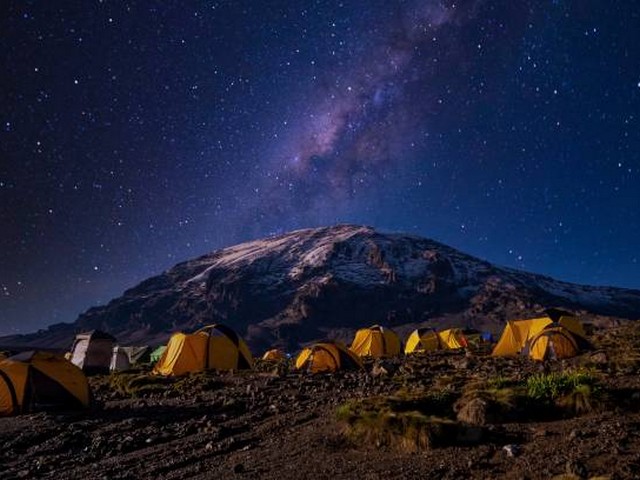How To Lead A Group Kilimanjaro Trekking Expedition: Your Ultimate Guide
Standing majestically as Africa’s highest peak, Mount Kilimanjaro beckons adventurers from all corners of the globe. Its breathtaking landscapes and the allure of conquering its summit make it a bucket-list destination for many. If you’re planning to lead a group on this awe-inspiring journey, preparation and knowledge are your best tools. Here at Kilimanjaro Centre for Trekking and Ecotourism (KCTE), we specialize in transforming Kilimanjaro dreams into tangible, triumphant realities. Join us as we guide you through the essentials of leading a successful group trekking expedition to the roof of Africa.
Understanding the Magnitude of Kilimanjaro
Why Choose Kilimanjaro?
Mount Kilimanjaro isn’t just a mountain; it’s a mosaic of ecological systems, each layer offering a unique perspective of nature’s splendor. From lush rainforests to alpine meadows, and arctic summits, Kilimanjaro provides a challenging yet rewarding experience for all.
The Role of a Group Leader
As a group leader, you are not only guiding the path but also ensuring the safety, motivation, and overall experience of your team. Leadership on Kilimanjaro means being prepared, informed, and resilient. It’s about making decisions that best serve and protect your group while fostering an unforgettable adventure.
Preparing for Your Expedition
Selecting Your Team
Choosing the right participants is crucial. Ensure that all members are physically capable and mentally prepared for the challenges ahead. Encourage pre-trek fitness preparations and organize meetings to discuss expectations and concerns.
Training and Conditioning
Advise your team to engage in regular physical training months before the trek. Cardiovascular exercises, hiking, and altitude training are beneficial. Remember, the fitter the group, the smoother the trek.
Gear and Equipment
Equip your team with the appropriate gear. Essentials include:
- Thermal and waterproof clothing
- High-quality hiking boots
- Sleeping bags suitable for sub-zero temperatures
- Headlamps, sunglasses, and sun protection
- Water purification supplies
At KCTE, we provide detailed gear lists and rental options for specialized equipment, ensuring no one is unprepared.
Logistics and Planning
Plan the route, considering the experience and strength of the group. Kilimanjaro offers various routes, each with different characteristics and challenges. Schedule adequate days for acclimatization to reduce altitude sickness risks. Additionally, arrange all necessary permits and park fees in advance, and consider travel insurance for the group.
On the Mountain: Safety, Motivation, and Management
Health and Safety Protocols
Prioritize health by educating the group on altitude sickness symptoms and prevention strategies. Establish clear communication channels and regular health checks. Ensure your group understands the importance of hydration and pace.
Keeping the Team Motivated
Maintain high spirits through encouragement and by celebrating small achievements. Keep the atmosphere positive and foster a sense of camaraderie. Share stories about the mountain’s history and its unique flora and fauna to enhance the group’s engagement and interest.
Environmental Stewardship
Teach and practice ‘Leave No Trace’ principles. Kilimanjaro is a fragile ecosystem. As leaders, it’s our duty to protect it by minimizing our environmental impact.
After the Summit
Reflection and Recovery
After descending, allow time for the team to reflect on the experience and recover physically. Organize a debriefing session to discuss the journey and lessons learned.
Celebrating Success
Celebrate your accomplishment together! Arrange a post-trek celebration to commend everyone’s effort and success. This not only rewards the group but also solidifies memories of a shared incredible experience.
Why Choose KCTE for Your Kilimanjaro Adventure?
At Kilimanjaro Centre for Trekking and Ecotourism, we are more than just a tour operator. Our deep-rooted passion for Kilimanjaro and dedication to ecotourism drive us to provide exceptional trekking experiences. We offer:
- Expert guides with in-depth local knowledge and high safety standards
- Comprehensive pre-trek support and detailed briefings
- Customizable itineraries and private group expeditions
- Commitment to sustainable practices and community involvement
Embarking on a Kilimanjaro trek with KCTE isn’t just about reaching the summit; it’s about embarking on a transformative journey that respects and celebrates this majestic mountain.
Frequently Asked Questions
Q: How long does a typical Kilimanjaro trek take?
A: Most routes take between 5 to 9 days, depending on the chosen path and pace.
Q: What is the best time of year to climb Kilimanjaro?
A: The best times are during the dry seasons, from late June to October and from late December to mid-March.
Q: Can beginners trek Kilimanjaro?
A: Yes, beginners can successfully summit Kilimanjaro; however, adequate physical preparation and choosing the right route are essential.
Q: How does KCTE handle emergency situations on the mountain?
A: We prioritize safety with all our treks. Our guides are trained in first aid and emergency procedures, and we establish evacuation plans for each expedition.
Ready to Lead?
Leading a group Kilimanjaro trekking expedition is an incredible opportunity to witness the power of human spirit and nature’s wonders. With the right preparation, leadership, and a spirit of adventure, you will provide your group with an experience they will cherish forever.
Feeling inspired and ready to plan your group’s trek to Kilimanjaro? Contact Kilimanjaro Centre for Trekking and Ecotourism today, and let us help you make it a reality. Reach out to us, and together, let’s make footprints on the summit of Kilimanjaro.




